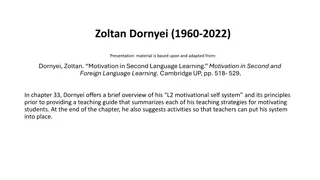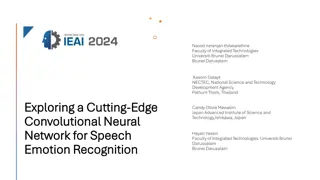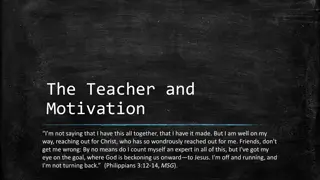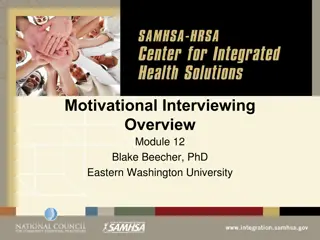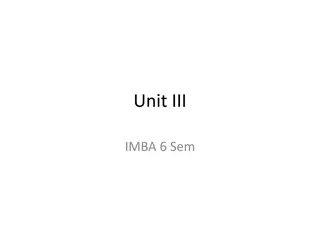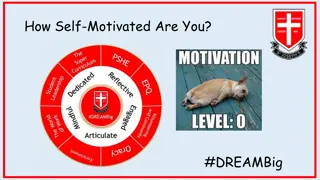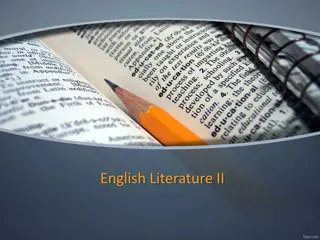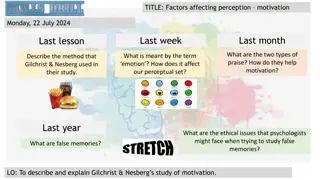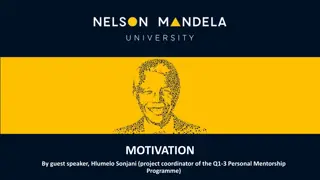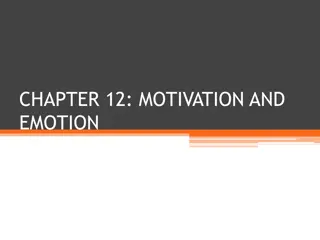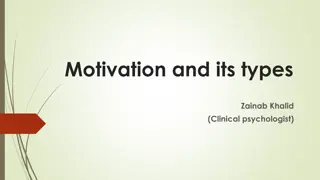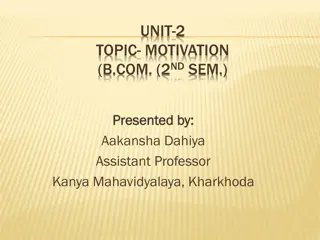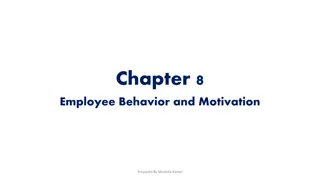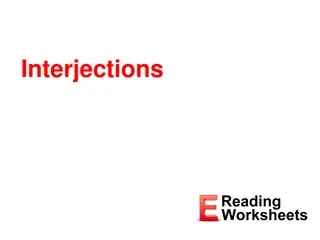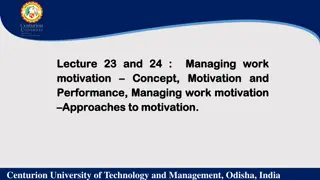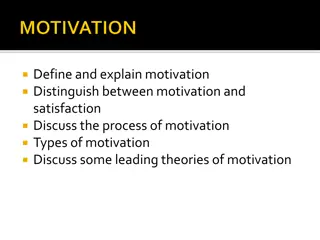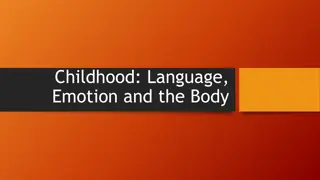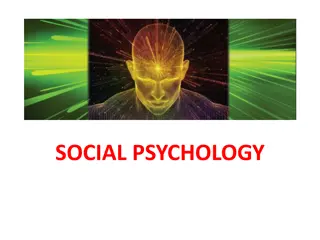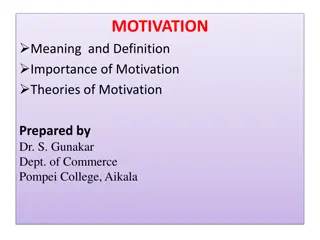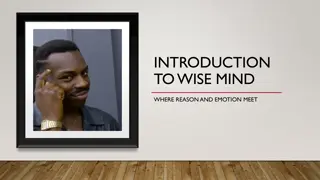Understanding Motivation and Emotion: Key Concepts and Types Explained
Motivation, derived from Latin "movere" meaning to move, is a force that drives behavior towards goals. It encompasses intrinsic and extrinsic motivation, different types of motives such as primary, stimulus, and secondary motives, and the interplay of needs and desires that influence human behavior.
Download Presentation

Please find below an Image/Link to download the presentation.
The content on the website is provided AS IS for your information and personal use only. It may not be sold, licensed, or shared on other websites without obtaining consent from the author. Download presentation by click this link. If you encounter any issues during the download, it is possible that the publisher has removed the file from their server.
E N D
Presentation Transcript
What is Motivation? The word Motivation is derived from Latin word Movere which means to move, thus motivation is a force which makes a person to move or behave in a particular way. Motivation is a need or desire that energizes behavior and directs it toward a goal. It is what either starts or stops behavior. It is the internal and external forces that drive our thoughts, moods, and behaviors.
inter-related terms Motive: It is the inner state that energizes, activates and directs behaviour toward goals. Motive arises out of the needs of individual e.g the need of food such as hunger motive, thirst motive. Motivation: It is the process of stimulating people to action to accomplish upon satisfying needs of people. Motivator: It is the technique used to motivate people e.g bonus , promotion etc.
Motivation Extrinsic Motivation: type of motivation in which a person performs an action because it leads to an outcome that is separate from or external to the person. Example: Going to work for money. Intrinsic Motivation: type of motivation in which a person performs an action because the act itself is rewarding or satisfying in some internal manner. Example: Creating a web site for fun.
Types of Motives Motives can be divided into three major categories Primary Motives Stimulus Motives Secondary Motives
Primary Motives Primary Motives are based on biological needs that must be met for survival. They are innate like hunger, thirst , pain avoidance, needs for air, sleep, elimination of wastes, and regulation of body temperature.
Stimulus motives Stimulus motives: express our needs for stimulation and information. For example, activity, curiosity, exploration, throwing parties, surf the net, reading, hanging out with friends, emailing each other. Imagine what your life would be like if you felt no arousal? No stress? BORING!
Secondary motives Secondary motives: based on learned needs, drives, and goals. Helps explain many human activities like making music, creating a web page, trying to win a skateboarding contest or American Idol. These motives are related to learned needs for POWER, AFFILIATION,(the need to be with others ), approval, status, security, and achievement.
Examples Primary Motives ( like satisfying hunger) Stimulus Motives ( like learning computers or dancing for fun ) Secondary motives ( motivated to do something for fame, power, approval status) What motives do these activities belong to? Reading history for pleasure Hunger Trying out for singing competition.
Different Theories on Motivation Different schools of thought look at motivation ( that power that either starts or stops behavior ) through different lenses. Instinct theory Drive Theory Incentive theory
Instinct Theory Instinct theory proposes that organisms are motivated to engage in certain behaviors because of their genetic programming and because these behaviors lead to success in terms of natural selection. For example, baby crying, sucking, crawling. nest building
Drive Theory Drive Reduction or Homeostatic theory. This perspective views behavior as motivated by the need to reduce internal tension caused by unmet biological needs. This unmet need drives us to behave in a way that causes the intensity of the drive to be reduced. They work by negative feedback, that is one experiences an unpleasant feeling (hunger, thirst) until you meet the need.
Drive Theory Continued The brain makes sure the body is kept in balance ( body temperature, fluid levels, energy supplies, need for rest ). This balance or optimal state is called homeostasis. This is our natural state. The body does its best to stay balanced.( hunger, thirst, sex drive, sleep ) However, how do we account for eating disorders?
Incentive Theory Incentive theory states that behavior is motivated by the pull of external (outside ) goals such as rewards. You come to class to get an A You work out to get compliments You go to work to earn money to buy a house Are all human behaviors motivated by incentives? What do you think?
Cont,,, Not all of human behavior has a direct reward attached to it. For example, how about those who are motivated to achieve just for the sake of achieving or who do things for fun or personal growth. What are some of the things we do for fun that don t have any incentive attached to them?
Importance of emotion Emotions can play an important role in how we think and behave. The emotions we feel each day can compel us to take action and influence the decisions we make about our lives, both large and small. In order to truly understand emotions, it is important to understand the three critical components of an emotion. There are three parts to an emotion: A subjective component (how you experience the emotion) A physiological component (how your bodies react to the emotion) An expressive component (how you behave in response to the emotion). These different elements can play a role in the function and purpose of your emotional responses
Emotions . Emotion is motivated condition remarked by physiological arousal, expressive behavior, and cognitive experiences (Sdorow, 1993). Emotion is defined as a state characterized by physiological arousal, changes in facial expression, gestures, posture and subjective feelings. An example of physiological changes ( or arousal ) are a pounding heart, sweating palms, butterflies in the stomach , and other bodily reactions.
Categories Of Emotions Emotions Are Divided Into Two Categories 1)Primary emotions A primary human emotion types are the one triggered in response to an event
Primary Emotions Fear Surprise Sadness Disgust Anger Happy
2) Secondary Emotions If we experience fear , the secondary emotions would be : feel threatened or feel anger , depending on the situation we are experiencing. Secondary Emotions Passion Optimism Irritation Disgust Shame Nervousnes
Variety Of Emotions Positive human emotions Positive emotions that lead one to feel good about one s self will lead to an emotionally happy and satisfied result. Some of the positive emotions are Hopeful ,Confident , Peaceful Negative human emotions Negative emotions sap your energy and undermine your effectiveness. In the negative emotional state, you find the lack of desire to do anything. Some of the negative emotions are Exhausted, Panic
Cannon-bard theory of emotion It states that we react to a stimulus and experience the associated emotion at the same time. we feel emotions and experience physiological reactions such as sweating, trembling and muscle tension simultaneously. For example: I see a snake --> I am afraid --> I begin to tremble.


